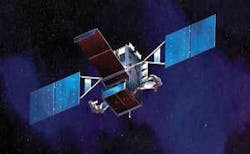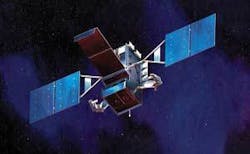Air Force taps more defense companies to develop alternatives to SBIRS High satellite surveillance system
By John Keller
LOS ANGELES AFB - U.S. Air Force leaders are moving ahead with plans for a possible replacement for the troubled Space-Based Infrared System (SBIRS) High program, which is to keep watch on the Earth’s surface for ballistic-missile launches.
The Air Force awarded two contracts Dec. 4 to define a system called the Alternative Infrared Satellite System (AIRSS) program as a potential alternative to SBIRS High.
A $23.4 million contract went to General Dynamics C4 Systems, Gilbert, Ariz., and a $24.8 million contract went to Northrop Grumman Space Technology in Redondo Beach, Calif. Awarding the contracts were officials of the Air Force Space and Missile Systems Center at Los Angeles Air Force Base, Calif.
General Dynamics and Northrop Grumman are joining two other defense contractors who are involved with designing alternative systems and technologies to SBIRS High, which is under contract to the Lockheed Martin Corp. Space Systems segment in Sunnyvale, Calif.
The Air Force awarded contracts in October to Science Applications International Corp. (SAIC) in San Diego, and to the Raytheon Co. Space and Airborne Systems segment in El Segundo, Calif., to participate in finding alternatives to SBIRS High.
SAIC won a $25 million contract from the Air Force Research Laboratory and Space Vehicles Directorate (AFRL/VS) at Kirtland Air Force Base, N.M., to supply a qualification model payload for the Air Force AIRSS Risk Reduction program.
SAIC’s work includes system engineering, optics and electronics hardware design and development, software design and development, engineering integration, and environmental, performance and acceptance testing. SAIC also will build an IR sensor assembly for space applications, and integrate the latest IR focal-plane arrays and readout electronics.
Raytheon, meanwhile, won a $54.4 million Air Force contract to develop a satellite payload consisting of a sensor with a focal-plane array large enough to capture images of the entire Earth from a geosynchronous missile-warning satellite. The contract came from the Air Force Missile Systems Center.
A Raytheon announcement released in October stated that the Air Force “is seeking to develop a solution with lower cost and risk than the geosynchronous missile-warning satellite in parallel development by another contractor for the third Space Based Infrared System,” in a clear reference to Lockheed Martin, which has been troubled by rising costs of developing SBIRS High.

